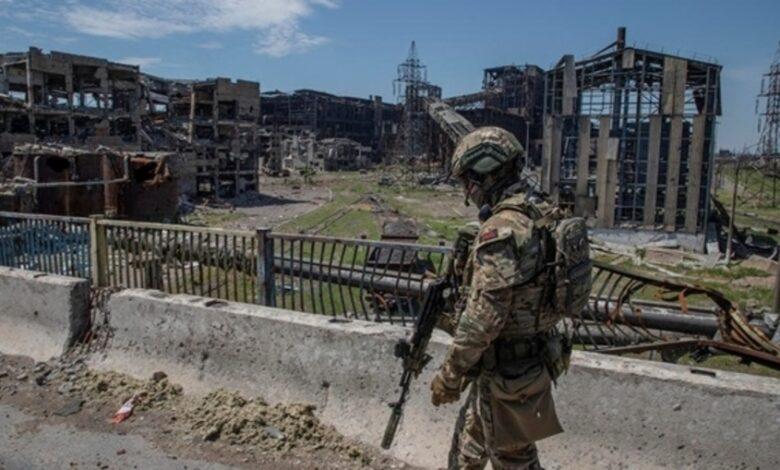“Super ATO”: the military explained what will happen after the “freezing” of the war

Ukraine has been at war for the fourth year, and it is natural that society, the military and international partners are trying to find ways to end it. Everyone is waiting for peace, because the grueling struggle has been going on for several years, taking lives, destroying cities and affecting the fate of millions of people.
Against the background of these expectations, various scenarios for the cessation of hostilities are being actively discussed. Some countries and international organizations are trying to propose diplomatic solutions that would stop the active phase of the war. One of these options is its “freezing” – the establishment of a demarcation line that could fix the current position of the parties at the front.
The idea of a temporary cessation of hostilities finds support among part of the international community, which sees this scenario as a way to reduce the level of violence and open the way for further negotiations. At the same time, among Ukrainian military and political experts, there is skepticism about such a model, as it may have unforeseen consequences. The experience of previous conflicts, in particular the ATO, shows that such agreements do not always lead to peace, but can only become a pause before a new phase of war.
These are the risks commented Ukrainian military serviceman, air reconnaissance Oleksandr Karpyuk, who, based on his own experience, explains why the “freezing” of the conflict will not lead to real stability, but will only create a new form of confrontation – “super ATO”.
As Oleksandr Karpyuk with the call sign Serg Marco noted, a possible scenario of “freezing” the war will not lead to stability, but, on the contrary, will only aggravate the situation at the front. He emphasized that such a scenario would resemble the period of the Anti-Terrorist Operation (ATO), when hostilities did not stop, but only took on a different form.
The military reminded that during the anti-terrorist operation, the Ukrainian units and the enemy remained in combat readiness. When one of the sides was in a worse tactical position, its commanders did everything they could to improve their lines: they dug in, strengthened their defenses, and regrouped their forces. As Karpyuk stated, it was precisely this factor that made snipers and subversive-reconnaissance groups (DRG) so effective at that time.
He explained that during the anti-terrorist operation there were certain restrictions: for example, it was forbidden to use heavy artillery, only 82 mm mortars were allowed. This forced the Ukrainian military to find new tactical solutions, in particular to work on the point destruction of the enemy. However, the situation has changed now – the role of snipers is gradually decreasing, because technological progress has made drones a more effective weapon.
Karpyuk emphasized that even in case of “freezing” of the conflict, the situation will not remain stable. He explained that neither Ukraine nor Russia trust each other, so military clashes will continue in any case. According to him, the experience of the ATO proves that after the announcement of a “ceasefire”, the parties still continue active actions – everyone tries to improve their tactical position, force the enemy to retreat or inflict maximum losses on him.
The military emphasized that the current situation is much more difficult than during the anti-terrorist operation. Modern fighters are equipped with drones, high-precision weapons, and the level of training of both sides has increased significantly. That is why, even if the front line temporarily “freezes”, it will not stop the hostilities – they will simply take on a different form.
As Karpyuk stated, he does not believe that peacekeeping missions, in particular the French initiative or other international efforts, will be able to effectively demarcate the parties to the conflict. He emphasized that if the enemies are given the opportunity to disperse for a few kilometers, this will not mean the establishment of a lasting peace. According to him, the so-called “gray zone” between the positions of the Ukrainian and Russian military will only be a territory for temporary respite, but will not bring true stability.
Karpyuk expressed doubt that the truce would last long, because even one incident could lead to a resumption of active hostilities. He explained that both sides are in a state of maximum tension, and any provocation can once again start the mechanism of war in full force.
“About 600,000 Russian troops are fighting now, but it is not the entire Russian army, but rather the strike group. Thus, they have certain advantages in numbers, although the situation is complicated by the fact that their rear units are located on the territory of Russia, which also have influence. It is technically impossible to destroy 600,000 Russians, taking into account the current mobilization and the amount of weapons. They, in turn, are also unable to perform strategic tasks. For example, they cannot capture Slovyansk, Kramatorsk or other cities, and this means that even tactical missions become difficult for them.” – explained the soldier.
Karpyuk believes that when both sides cannot achieve a military victory, the only option to end the conflict is diplomacy. He noted that at a certain stage it will be necessary to proceed to negotiations, search for compromise solutions and establish a certain “status quo”.
“My task as a soldier is to destroy the enemy. And I do what I was told. And what they think there at the strategic level is a question for politicians. I believe that before, until 2023, the situation was more favorable for operational breakthroughs, when we had the necessary amount of weapons and resources. But now, after three years of war, it is much more difficult to do this. Russia had time to restore its forces, and we were not given the opportunity to finally win at the beginning of the conflict,” – summarizes the aerial scout.





